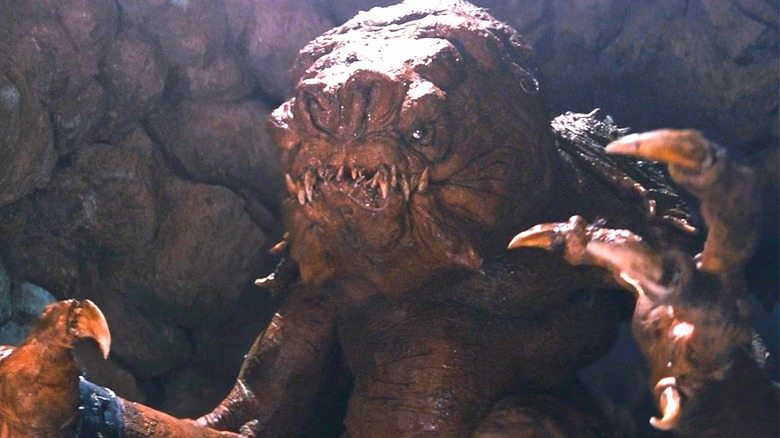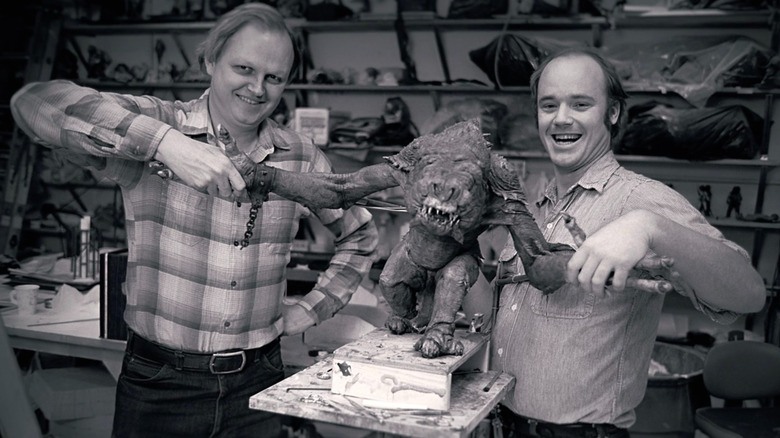Star Wars: Why Does Jabba Have A Rancor And How Did He Get It?
When entering the palace of Jabba the Hutt, it's not the notorious space gangster whom visitors need to fear. Rather, it's the fearsome pet rancor residing in the lair underneath Jabba's headquarters that can ruin your day, as Luke Skywalker (Mark Hamill) nearly discovers for himself during a close encounter with the creature in "Return of the Jedi." It's hard to believe that a grotesque slob like Jabba the Hutt could ever wrangle something as vicious as the rancor, so just how did the fan-favorite "Star Wars" monster wind up in his possession?
As told in the short story "A Rancor Comes to Tatooine" featured in the 1987 book "The Star Wars Sourcebook," the rancor escaped and slayed a crew transporting it to antiques dealer Grendu. A Jawa sandcrawler reported the ship's destruction to Bib Fortuna and Bidlo Kwerve. The two gave the rancor as a gift to Jabba, who went on to name the creature Pateesa. While Fortuna was given the honor of being Jabba's second-in-command, Kwerve saw a far darker fate as the first of Pateesa's sacrifices.
This would become a form of entertainment for the palace's inhabitants: either watching the half-starved rancor devour anyone unwise enough to upset Jabba or seeing it pitted against other monsters. The only individual who ever showed Pateesa true kindness was its caretaker Malakili, with the monster even defending Malakili from a Sand People attack at one point.
Creating the rancor in real life took some trial and error
The rancor may have been a gift for Jabba the Hutt, but crafting the creature was anything but for the team at Industrial Light & Magic. The team's efforts to push the envelope with how to create the rancor came with their fair share of challenges.
In the Disney+ documentary series "Light & Magic," effects artist Phil Tippett explains that the rancor — whose design was inspired by crossing a bear with a potato — was intended to be a stop-motion puppet. However, George Lucas had a different method in mind. "George said he wanted to do it as ... 'the best Godzilla suit ever,'" Tippett says in the documentary. The crew did several tests of a bulky rancor costume, but it failed to please Lucas. ILM artist Dennis Muren came up with the idea of using a rod puppet shot at a high frame rate.
That wasn't the end of the team's headaches. Given that it was shot at 72 frames per second, three times the usual film frame rate, Tippett and the other puppeteers had to perform faster than usual to ensure the puppet's movements would come out smoothly. The task was an arduous one, with Tippett explaining in an interview on the Star Wars Complete Saga Blu-Ray, "There would be some shots that was, like, 70 takes. We ... tried to do different stuff that you just don't know until you take a look at it." Their hard work paid off, as Tippett and company were honored with a special achievement award for visual effects at the 1984 Academy Awards.

